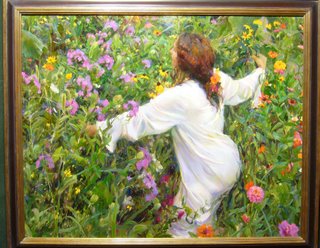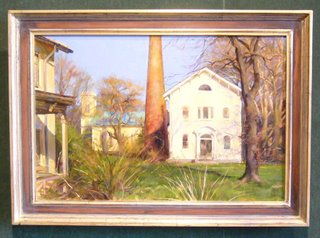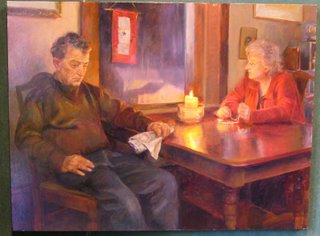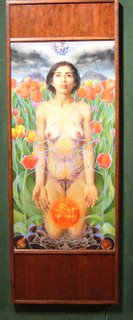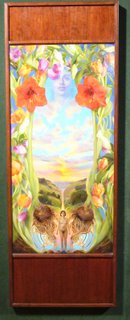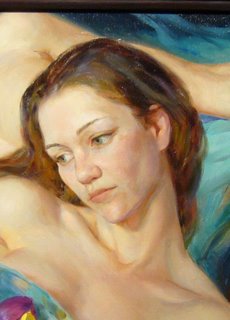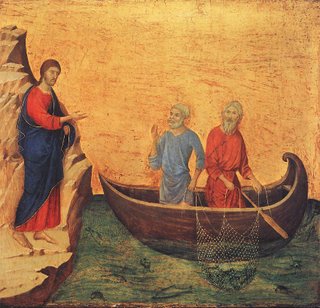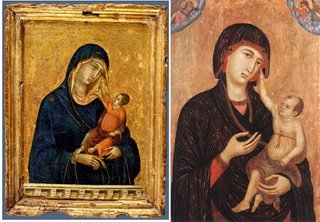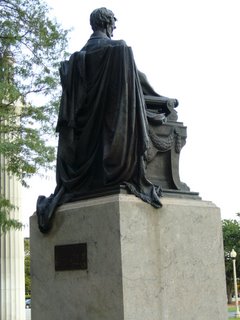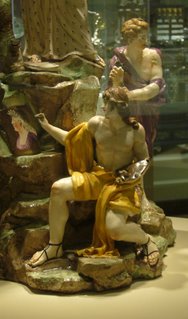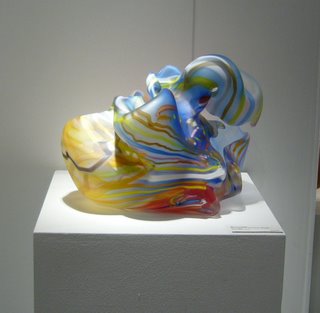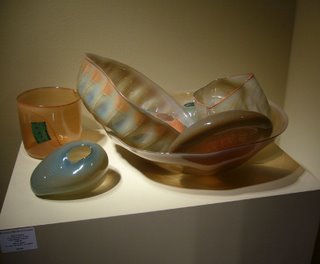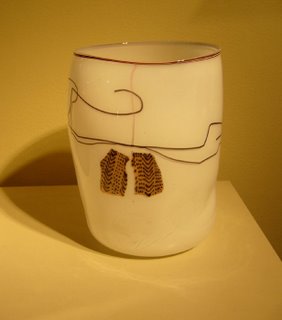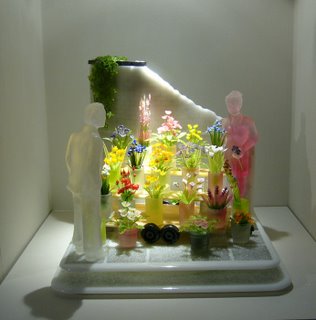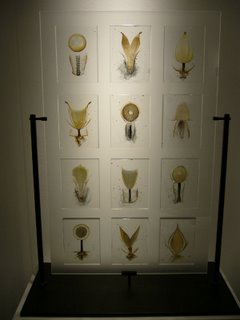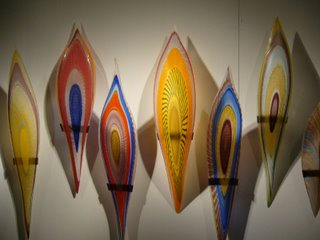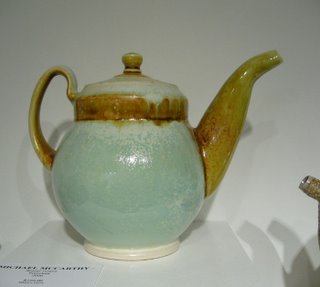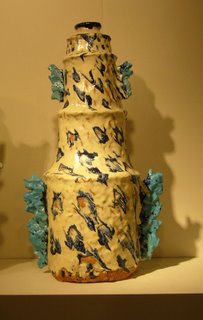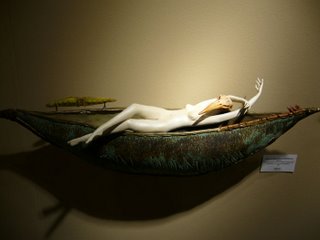Walter Zimmerman commented
here...
Mr. Miller --
I think I may have sent you a carefully-worded comment, or maybe it's been jettisoned into cyber-space because I didn't have a google account before I started writing to you. In any event, it was interesting to find my glass/mixed media work, the 'Incident' series, included in your personal tour of the recent Chicago SOFA exhibit.
Just because we don't want to experience something, does that mean we don't need, perhaps, to look at it anyway? Or is the only respectable function of art to soothe and reassure the viewer?
(And, if that's the case, I'm interested that you "see" so much of the work included in your tour hanging in doctor's offices. Who would see it there? People whose lives are unblemished?)
Ah well, enjoy your ruminations, and thanks for stopping and looking at some of the things I make.
Sincerely,
Walter Zimmerman
And my work looks much, much better when it hasn't been dusted. Ever.
-----------------------------------------------------------------------------
anne has left a new comment on
Preston Jackson at the Chicago Cultural CenterYou may want to trade eyes and see how the round shapes of the statues may be used to invoke promises of life to be born. The work is more about life than death, more about reconciliation than evil. Jackson chose "the Garden" to plant his creations so even so they have been uprooted form their mother land, their may reconstruct life. Next time you take a walk,look at the trees, the leaves, the fruits of the earth, may be you will see some resemblance. The evil there is the one you can't see.
--------------------------------------------------------------------------
marlyat2 has left a new comment
here I dearly love Marvell, and I think you mean not a "wandering orange" but a "nectarine." That poem does seem right for you! As do several others by Marvell...
Loved your comment about the bed and snow--certainly the idea that a woman may be freezing to death in her own home is evocative.
No doubt--as art schools turn back to the idea of training students to have basic skills and people decide that they don't want to pay for or contemplate merde in a can--all that stuff in the basement will some day be dragged up to the life and looked at with fresh eyes. Someday.
"Naturalism" is the literary period most enmeshed in work and grind, though it's also violent. But I note that it seems unpopular in our time.
However, isn't Faulkner a regionalist? And yet would A Hundred Years of Solitude have been written and called forth its own progeny without Absolom, Absolom
--------------------------------------------------------------------------------
MW said...
here "... that breathtaking interior symphony of volume that distinguishes the great from the good."
Very, very nice. I'm warning you; I'm going to use that at some point. When I purchased my first high-end speakers, I took an audiophile friend with me as a consultant. After an hour all the speakers began to sound alike to me so I asked him how one possibly could make a choice. His response:
"You'll know the right ones when you can hear the velvety blackness between the notes."
========================================================================
Lori Witzel said...
Here Fabu! The Other Side of Mr. Miller! You have great camera-presence, BTW.
Hope that brought more folks to your shop, and hope they think to ask (and come back for) the sculpture.
BTW, here's my Warhol-time -- I played The Traumatized Yacht Owner in this movie:
Slackers ===========================================================================
marlyat2 said...
here As usual, you have an interesting reading of things. While Venus or Persephone may be the more correct answer, I like yours!
I would probably alter it a little, though. While one can look at the central panel as bridal or initiate into womanhood, the left-hand panel is clearly in the realm of eros. The naked woman has her hair sacked up in a net and plays a flute--several erotic forms there! Reminds me of the woodcut of Spenser's poor old Colin Clout, who breaks his bagpipe in "peeces," all for the love of cruel Rosalinde:
http://darkwing.uoregon.edu/%7Erbear/januarye.html
And I don't know if the other woman is so old. I'd suggest that one side may refer to the sensual "side" of woman and the other to the spiritual, at least if one can trust the little censer or whatever it is--some ritual object.
================================================================
Bill said...
here Hmm. Don't they know they should all be hard at work posting great images I can enjoy for free!
Here is what the money-making arm of the National Gallery of London is up to (I couldn't get access to the prices charged, but its pretty obvious I wouldn't want to pay them just for gander):
http://www.nationalgalleryimages.co.uk/About%20us.aspx
10:14 AM
chris miller said...
here I just signed up and got the price:
it runs about $250 per image (plus about $60 per order service fee).
(and that's just to have the image on your website for period of time - up to three years -- or mailed to you on a dvd )-- which similar to what they'd charge for you to publish it in a book.
Ouch.
:::::::::::::::::::::::::::::::::::::::::::::::::::::::::::::::::::
marlyat2 said...
here Hello, Chris--
School has started, so I'm back.
I'm going to order some of those Japanese anemones. I have a great desire to convert the back yard into a garden, but Hanna the lab works against me. This is a delicious, idiosyncratic garden. I'd love to see it.
It would be very interesting to see what you would do with "garden railroading." It seems to be a very popular pursuit. I can think of one such garden just a couple of blocks away from me. You could get John Putnam to help you miniaturize the world....
11:36 AM
Delete
chris miller said...
here Marly, I'm so glad you're back !
(in this blog's imaginary ideal audience -- you're in the middle of the first row -- though, come to think of it -- so is everyone else who's commented so far)
I'm into model railroads (or at least, fantasizing about them) because that was yet another one of my father's out-of-control projects -- he filled the entire attic with this miniature world -- and sad was the day when it got taken down.
10:06 AM
Delete
:::::::::::::::::::::::::::::::::::::::::::::::::::::::::::::::
Otto van Karajanstein said...
here As a Canadian, I think Chris makes a valid point in the sense that these kinds of works define Canadian art in a way that they do not American art.
If one looks at what is considered to be paradimatic Canadian art, it's safe to say that these kinds of depictions, of forests, of people living hard lives, are a fairly constant feature.
Now that's not to say that Americans lack this, rather that it is a subset of America's artistic heritage where is would be central to the Canadian one.
9:53 PM
chris miller said...
here That's also what I've sensed about "what is central" to the Canadian heritage, Otto -- though the closest I've come to living in Canada is Buffalo, New York.
Americans just don't have this thing about people living hard lives. Instead, we'd prefer to meditate on the elation and danger of violence.
11:03 AM


